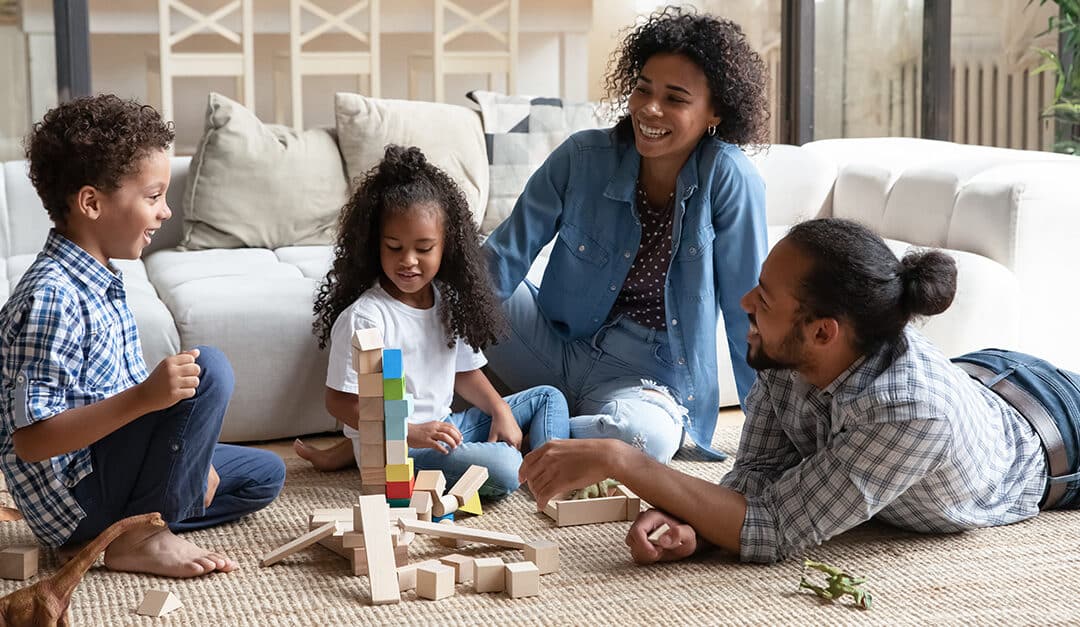When it comes to helping your kids learn Spanish, there’s one factor that’s more important than any other: conversation. The more they talk with others using Spanish, the faster they’ll gain fluency. It really is that simple.
What may feel less simple is getting that Spanish conversation practice in while you’re at home. As you may have noticed, sometimes it’s hard to get kids to talk with you even in their first language! Another hurdle to having conversations in Spanish?
Your kids might not have the Spanish vocabulary yet to talk about the things they’re really interested in, like the plot of their favorite Netflix show.
The solution is to have a few simple conversation starters in Spanish ready to go. And that’s what we want to talk about today! We’re betting that a lot of your conversations with your kid revolve around the same nouns (like Grandma, their backpack, the park near your house) and verbs (like eating, playing or going outside).
These conversation starters help kids learn the Spanish words for common nouns and verbs, which sets the stage for more complex Spanish conversations later.
Spanish Conversation Starter 1: What Is It?
To kick things off, gather three objects that your kid uses daily. Point at the first object and ask your child “¿Qué es?” (“What is it?”). They respond with the name of the object. For example, “Es un zapato” (“It’s a shoe”). Then do the same for the other two objects.
Spanish Conversation Starter 2: Where Is It?
Next, let’s move on to slightly more complex exchanges that will also help solidify your kids’ knowledge of the nouns you’ve practiced. In Spanish, ask your kid where one of their possessions is. They then must respond to you in Spanish. For example:
- You: “¿Dónde está tu mochila?” (“Where’s your backpack?”)
- Your kid: “Está en la cocina.” (“It’s in the kitchen?”)
Spanish Conversation Starter 3: Who Is It?
Now let’s start bringing people into the picture. Here’s another question you can ask to start a conversation in Spanish:
- “¿De quién es?” (“Who is this?”)
- Your kid’s response should start with “Es de… ” (“It’s …”)
- For example:
- “Es de Olivia Rodrigo.”
You can use this Spanish conversation starter in many situations, such as looking at photos, watching TV or YouTube or meeting your kid’s friends.
Give Your Child the Gift of Spanish!
Spanish Conversation Starter 4: Whose Is It?
In this exercise, you and your child will talk about both objects and people. Start by putting an item on the table. Next, ask your kid whose item it is. Here’s an example:
- You: “¿De quién es la mochila?” (“Whose backpack is this?”)
- Your Kid: “Es de Sam.” (“It’s Sam’s.”)
Spanish Conversation Starter 5: We’re Going to …
Of course, you don’t just need nouns to have a great conversation! So let’s try a Spanish conversation starter that focuses on verbs — and that feels more like playing a game than studying.
Here’s how it works: Tell your child that you’re about to say a sentence in Spanish and that you want them to do what you say.
Start your sentence with “Vamos a. … ” (“We’re going to …”)
Here are a few examples of how you could finish that sentence, and how your kid should respond.
- “Vamos a comer.” (“We’re going to eat.”)
- Your child goes to the dining room or kitchen.
- “Vamos a jugar.” (“We’re going to play.”)
- Your child goes to their toys.
- “Vamos a salir.” (“We’re going to leave.”)
- Your child goes to the front door.
Spanish Conversation Starter 6: What Do You Want to Do?
Now here’s a topic your kids will probably love talking about! Your question to kick off this Spanish conversation is “¿Qué quieres hacer?” (“What do you want to do?”)
Your kids can then respond using the Spanish verbs they know. If they’re new to Spanish, teach them these three simple responses first:
- “Quiero comer.” (“I want to eat.”)
- “Quiero ir al parque.” (“I want to go to the park.”)
- “Quiero dormir.” (“I want to sleep.”)
Tips for Successful Spanish Conversations
- If your kid doesn’t understand what you ask in Spanish or know how to respond, help them identify what they do know, and then help them figure out the rest.
- These exercises are not “one and done.” All of them require repetition.
- A great thing about these conversation starters is that they’re adaptable to your kid’s experience level with Spanish. As they solidify their knowledge of words and phrases you’re working on, keep adding new vocabulary to your Spanish conversations. Remember, however, to keep the focus on everyday nouns and verbs.
- Need more ideas for Spanish vocabulary to include in your conversation practices? We have a ton of resources on the TruFluency Kids blog.
¿Qué es TruFluency Kids? It’s the Spanish Immersion Program You Need
We hope that these ideas spark lots of fun conversations in Spanish for you and your kids. Keep practicing, and soon they might even start a conversation with you!
Want to give them even more Spanish conversation practice? We can help.
TruFluency Kids’ online Spanish Immersion is fully committed to your kids’ Spanish learning journey. We have native speaker teachers who are ready to help your kids learn useful Spanish for real life.
Our Bellieu Method, created to encourage Spanish conversations, can accelerate your kids’ journey to fluency. Plus, we just have lots of fun! Our classes feature activities like singing, doing crafts, storytelling and cooking.
Sign your kids up for a 30-minute trial class now! It only costs $9 and we have flexible schedules to fit your busy life. After the trial, you’ll have the opportunity to join a Q & A for parents, so we can answer all your questions.


